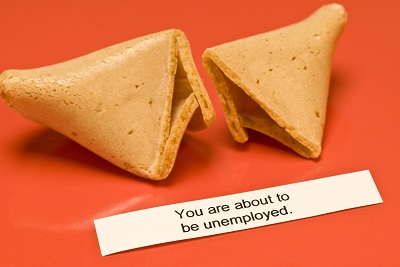
An amazing statistic came out earlier this week, one that CNBC remarked on but still, in my view got too little attention. Here’s the report from CNBC:
The number of Americans filing applications for unemployment benefits dropped to a more than 49-year low last week, pointing to sustained labor market strength despite slowing economic growth.
Initial claims for state unemployment benefits declined 10,000 to a seasonally adjusted 202,000 for the week ended March 30, the lowest level since early December 1969, the Labor Department said on Thursday.
That’s way more amazing than the low 3.8 percent unemployment rate reported this morning. The reason is that 3.8% is a percent of the labor force, but the 202,000 number for initial claims for unemployment benefits is an absolute number. Has anything happened to the number of workers in the U.S. economy since December 1969? Well, yes. It has more than doubled, from 71.2 million to 150.8 million.
So as a percent of the number of people employed, the 202,000 is less than half of the percent for December 1969. On December 6, 1969, it bottomed out at the same level: 202,000. That’s real progress.
Now, you might argue that that number reflects the low unemployment rate today, compared to December 1969 when the unemployment rate was higher. But you would be wrong. The unemployment rate then was 3.5%. But even if the unemployment rate had been higher, don’t forget the most important fact: the number of people employed is double what it was then.
You also might argue that the relatively low number of initial claims for state unemployment benefits is due to the fact that a smaller percent of the labor force qualifies for unemployment benefits. I don’t know if that’s true. If it is, I think that’s good too. Compulsory government-run unemployment insurance is a bad idea. But that’s a longer discussion.

READER COMMENTS
Thaomas
Apr 5 2019 at 4:24pm
And additional evidence that the Fed should not be (and should not have been) raising interest rates because unemployment is “below equilibrium,” especially since the price level has not recovered even a 2% pa trajectory since 2008, the many many months that the Fed allowed the price level to drift farther and farther away from target.
Phil H
Apr 6 2019 at 2:09am
Dear Prof Henderson,
In one recent post you suggested that minimum wage laws had harmed the working prospects of a lot of low-wage workers. This news that you post here seems to be prima facie evidence against that. Can you briefly explain why it’s not, or why it is defeated by stronger evidence the other way?
Matthias Goergens
Apr 6 2019 at 2:33am
One could argue that without minimum wage, the numbers could be even better?
The minimum wage is definitely more of a factor outside of boom times. And if inability to find a job permanently discourages would-be jobseekers, they won’t show up in the unemployment statistics, yet alone as a new claimant.
For people who’s productivity is barely above minimum wage levels, minimum wage laws won’t hurt their immediate employment. But those laws will force them to take their whole compensation as wages instead of allowing them to opt for more on the job training or flexible working hours etc.
In practice, your federal minimum wage levels in America seem to mostly stay below the levels where they have a big impact on raw employment numbers, but the effect on training and career mobility is quite measurable. (If I remember the studies right..)
David Henderson
Apr 6 2019 at 11:06am
Thanks, Matthias. Well said.
One little tweak: Think about really unskilled workers–say, handicapped or very low-IQ workers. Their productivity might be as low as, say, $4.00 an hour and they never get in the statistics on employment or unemployment. In other words, there are workers–I would be a few hundred thousand or more–whom the minimum wage, even at $7.25 an hour, has kept out of work more or less permanently.
Ray
Apr 6 2019 at 9:16am
Localization effects? I think the minimum wage has only approached $15 in a few, well publicized places.
David Henderson
Apr 6 2019 at 10:58am
Phil H,
Thanks for asking.
The data I presented are on initial claims for unemployment insurance. To make a claim, you must have been previously employed for a certain minimum of time, typically 20 weeks in “covered employment,” that is, employment for which the employer is paying unemployment insurance taxes. One of the major problems with the minimum wage is that it prevents particularly unskilled young people from getting those jobs in the first place.
The other data I presented are on the unemployment rate and the number of jobs. They don’t at all contradict the idea that particularly unskilled workers will have trouble finding work. Indeed, a breakdown of the data shows that young people, a disproportionately high percentage of whom are unskilled, have the lowest employment to population ratio and the highest unemployment rates. The unemployment rate for people age 16 to 19 last month, for example, was 12.8 percent, which is more than 3 times the overall unemployment rate.
Phil H
Apr 7 2019 at 11:59am
Thank you very much, that’s useful!
I take the statistical point. I’m not so sure about the “value of labour” point. My experience is that the value of my labour varies quite widely depending on my institutional context. I’m a better translator than I was 15 years ago, but I earn many times more largely because I’m better at negotiating the institutions, not necessarily because of my increased skill.
But I appreciate you taking the time to reply fully to me, I will think about all of these responses in more depth. Thanks again.
Comments are closed.